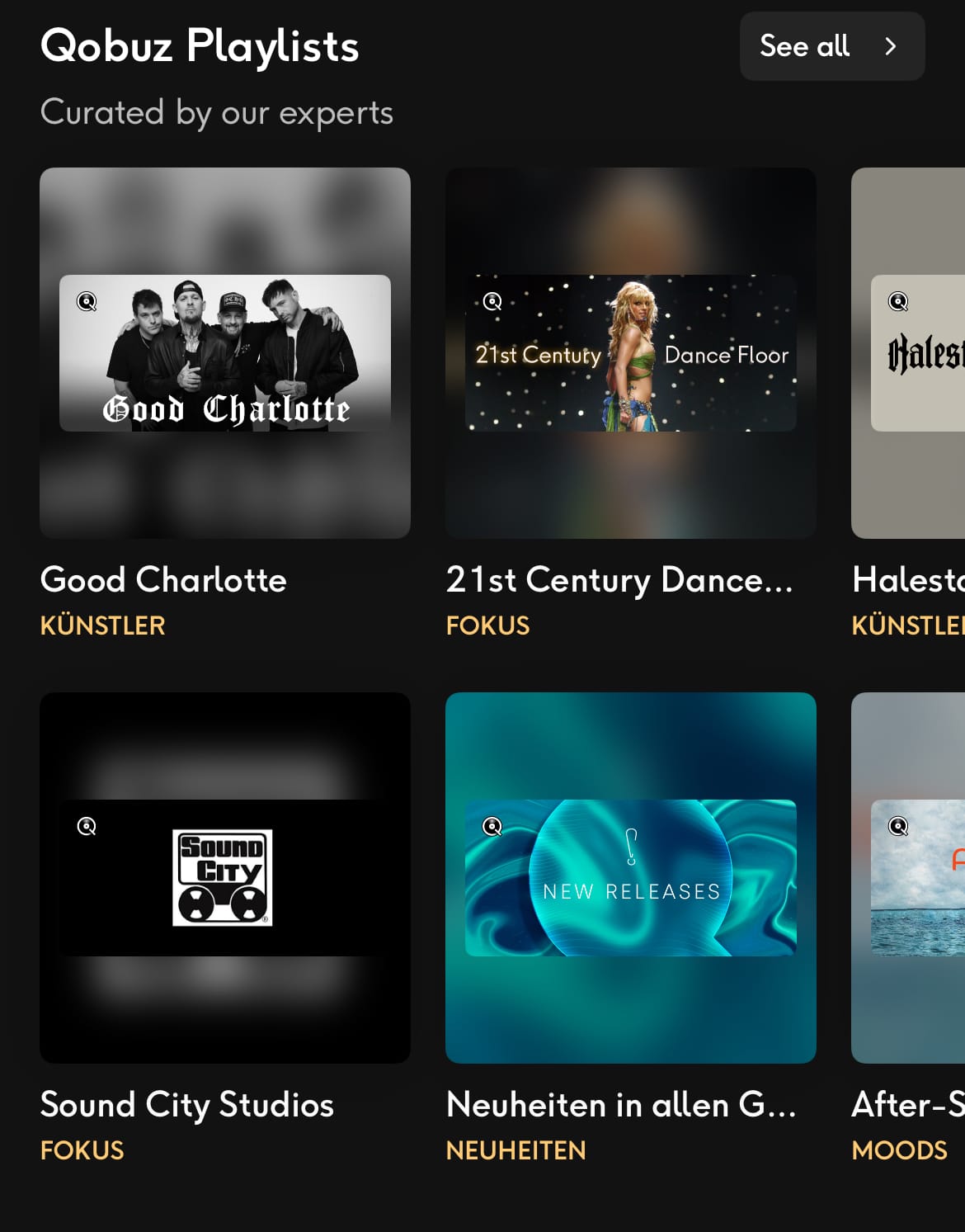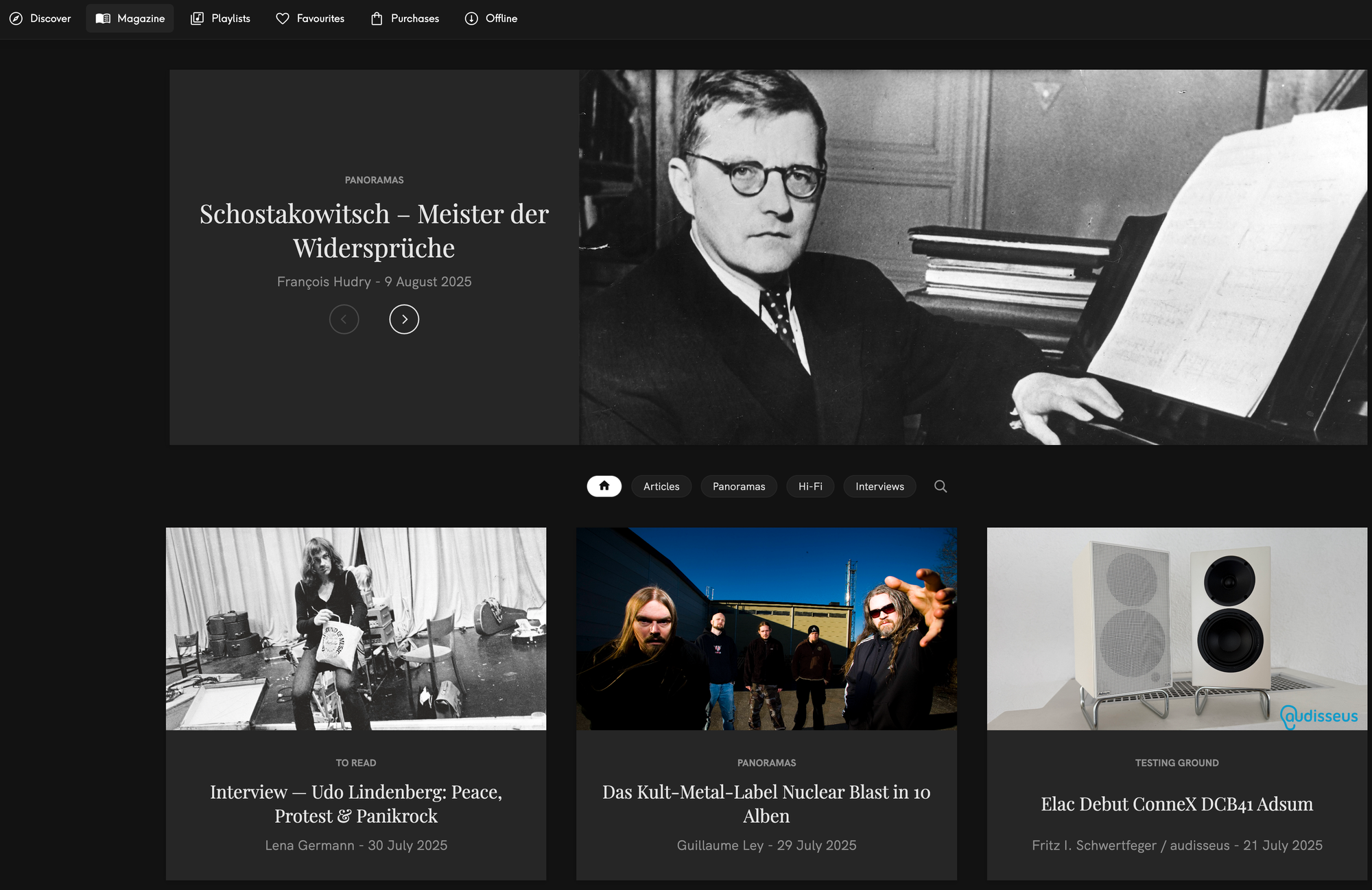If you haven’t heard yet: Spotify CEO Daniel Ek has poured €600 million into AI war drones. This news—alongside rumours that the Swedish company is filling its platform with AI-generated songs—has sparked renewed outrage among artists and creatives alike.
If, like me, you’re fed up with tech oligarchs wrecking culture and want to put your money where your ears are, you’ve come to the right place. Let’s talk alternatives.
As a heavy Spotify user (60,000+ minutes/year), I had four main requirements:
- A streaming service
- Made in Europe
- That pays artists fairly
- And allows me to transfer my library easily
My research spat out Qobuz. The Paris-based streaming platform emphasises its fairness and transparency by publishing its third-party-verified numbers. Qobuz pays $0,021 per stream to music rights owners. Only Napster is said to pay similar numbers. Apple is at roughly half that, and Spotify pays a measly $0.005.
But being the fair streaming platform is not Qobuz’s main selling point. Upfront, Qobuz is mainly advertising its Hi-Res-streaming: up to 24-bit / 192 kHz. Which is in stark contrast to what I learn from reviews: it’s not the tech-savvy platform—I didn’t coin Quboz the “Boomer of Streaming” myself.
But enough Boomer jokes, let’s get into the review for all you Zoomers.
Catalogue & Library Transfer
The transfer of my library was super easy with a third-party tool Qobuz recommends ($7 fee). Apart from a few niche tracks, it found everything, so their catalogue isn’t lacking depth.
Price
If you subscribe to Qobuz directly via their website, you only pay $1 more than Spotify – $ 12.99/month for the Studio plan, which the folks at Qobuz kindly reminded me of before my one-month trial ended. There are also reduced plans for duo, family, and students. The comparison obviously depends on your country.
Algorithms
Qobuz relies more on curation than algorithms. Their only weekly playlist, “My Weekly Q”, mixes new releases with songs you might like—but so far, it hasn’t nailed my taste. Instead of countless “radio” or mood playlists, Qobuz highlights good old albums. New releases are pinned to the top of the app, and “Qobuzissime” highlights newcomers. You do have to dig a little. But that’s cool again, isn’t it?
Special Features
When you listen to an album, you can read a review right next to the cover. Some are current; others are from back when music reviews actually mattered. It’s a gimmick at best, but sometimes it’s funny to read how “a CD is to be viewed as a work as a whole.” There’s also a “Magazine” section featuring more content to read, along with occasional interviews conducted with a video recorder.

Audio Quality
I think it’s part placebo effect, part actual quality: I’m not always sure if it sounds better, but it definitely feels better.
The Best Feature
Sort by genre. Holy shit, yes! If you’re like me and prefer gathering your favourite songs into one mega-playlist rather than dozens of smaller ones, here’s your salvation. You can sort every section of the app (except playlists themselves) by genre – your discovery page, your albums, your songs.
The Worst Part
The apps feel dated. On desktop, you can’t double-click songs – you have to hit the play button. Playlist images are ugly. And of course, there’s the boomer part (see Final Notes).

Swiss Music
On Qobuz, there’s a genre called “German Music” that includes all German-sung music—even Swiss German. This is kind of good and bad at the same time, because there’s not only “Mundart” music that deserves a spotlight.
Asked about this, the spokesperson of Qobuz points out playlists covering Swiss artists like Faber, Sophie Hunger or Yello (so the very-very-very-very best of). “And our editorial wants to cover more ‘mundart’,” they told us. Adding that they are just too busy to do so.
Final Notes: Slow down, Zoomer
If you were born after 1980, Qobuz might feel like your parents became a streaming platform: still talking about the bands they loved when they were young, struggling to keep up with trends, and adopting digital changes in baby steps.

Sometimes it’s fun to rediscover a classic, but for my taste, Qobuz—through its editorial and curatorial focus—leans too far into the past. That’s not to say their editorial work is bad; I discovered Miso Extra through it. But a little more balance would go a long way.
What I do like—something that reflects the “quality standards” of boomers—is that you’re not bombarded with content. Like operating a record player, Qobuz lets you slow down, dig into new releases, and actually appreciate the music.
So, with high hopes that the colleagues in Paris will read this and stop to reduce our music scene to “Mundart”, I’m staying with Qobuz… and maybe becoming a little more like my dad. (Never!)
Pro tip: Don’t transfer your “favorite songs” playlist. Transfer everything else and rebuild that playlist from scratch—it’s a fun exercise.








